Stocks were flat yesterday ahead of today's CPI report. Forecasts call for a 0.3% month-over-month increase in both core and headline CPI, with year-over-year gains of 2.9% for headline and 3.1% for core. Unlike last month, there have been no last-minute upward revisions.
CPI Swaps
Expiration Date Uses 3-Mo. Lag
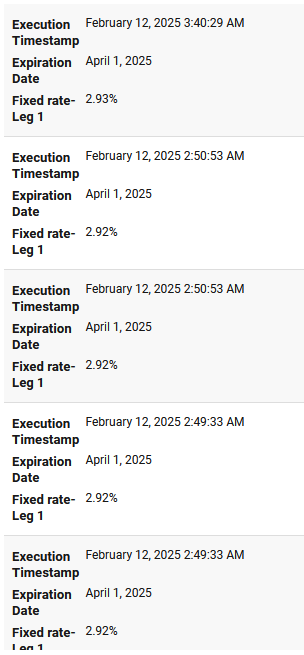
January swaps have remained relatively stable, trading around 2.93%, which isn’t enough to round the headline number to 3% but is a closer call than earlier this week. However, the market’s upward momentum could indicate that the CPI report may be hotter than analysts expect.
Kalshi is pricing in core CPI, coming in at 3.2% y/y.
What’s clear, however, is that fears of accelerating inflation are rising. The 2-year CPI swap climbed to around 2.7% today, marking a new local closing high. If tomorrow’s data is supportive, the swap could be well on its way to approximately 2.85%, the next area of resistance.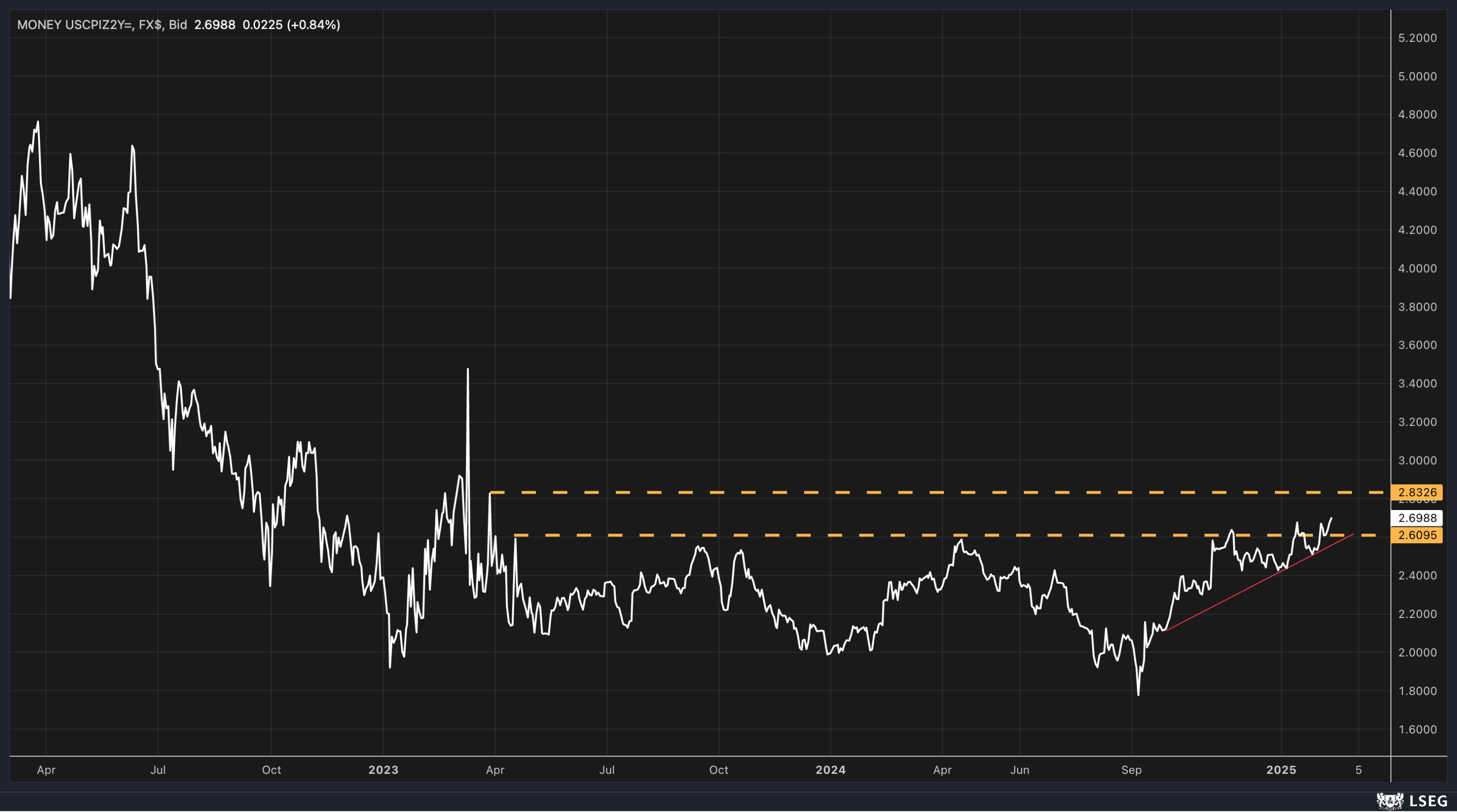
The same applies to the 5-year inflation swap, which rose to a new local closing high. It seems unusual for the swaps market to push inflation expectations higher ahead of the CPI report unless the market fears a number coming in hotter.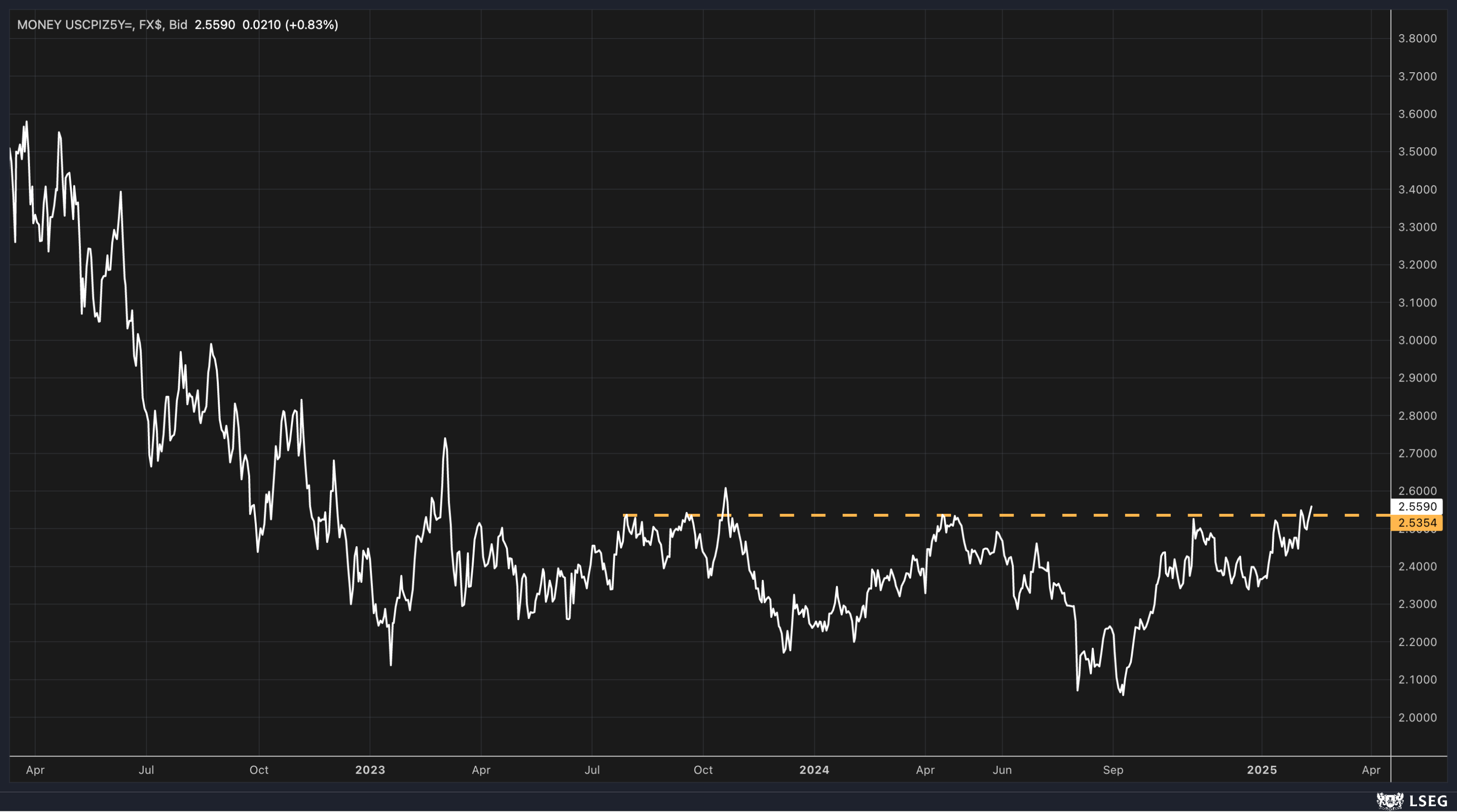
We also saw the 10-year rate rise yesterday, breaking above a downtrend and successfully holding support at 4.4% for now.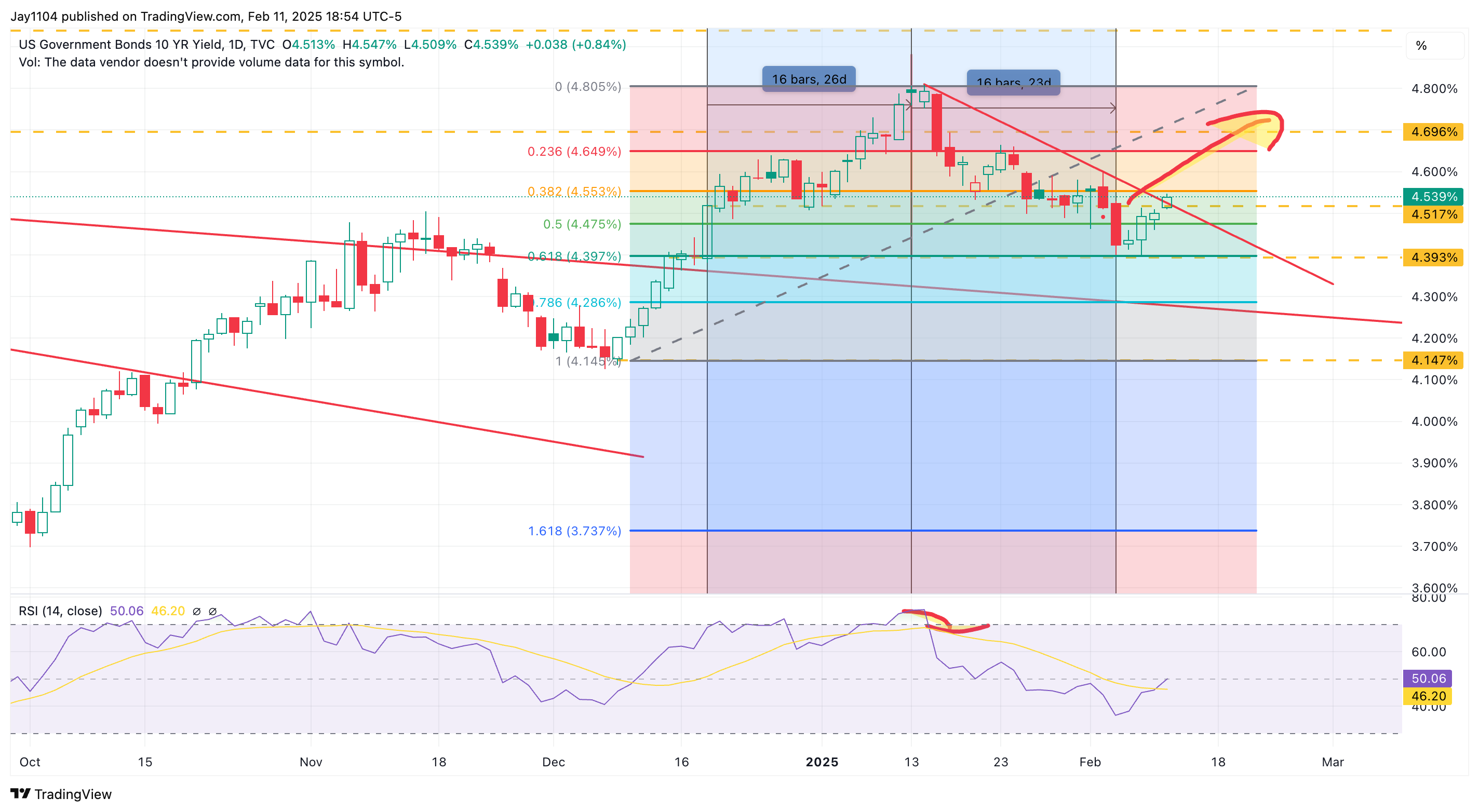
December 2025 Fed Fund futures are trading at 3.99% and appear poised to move higher with the ascending triangle. Again, data dependent.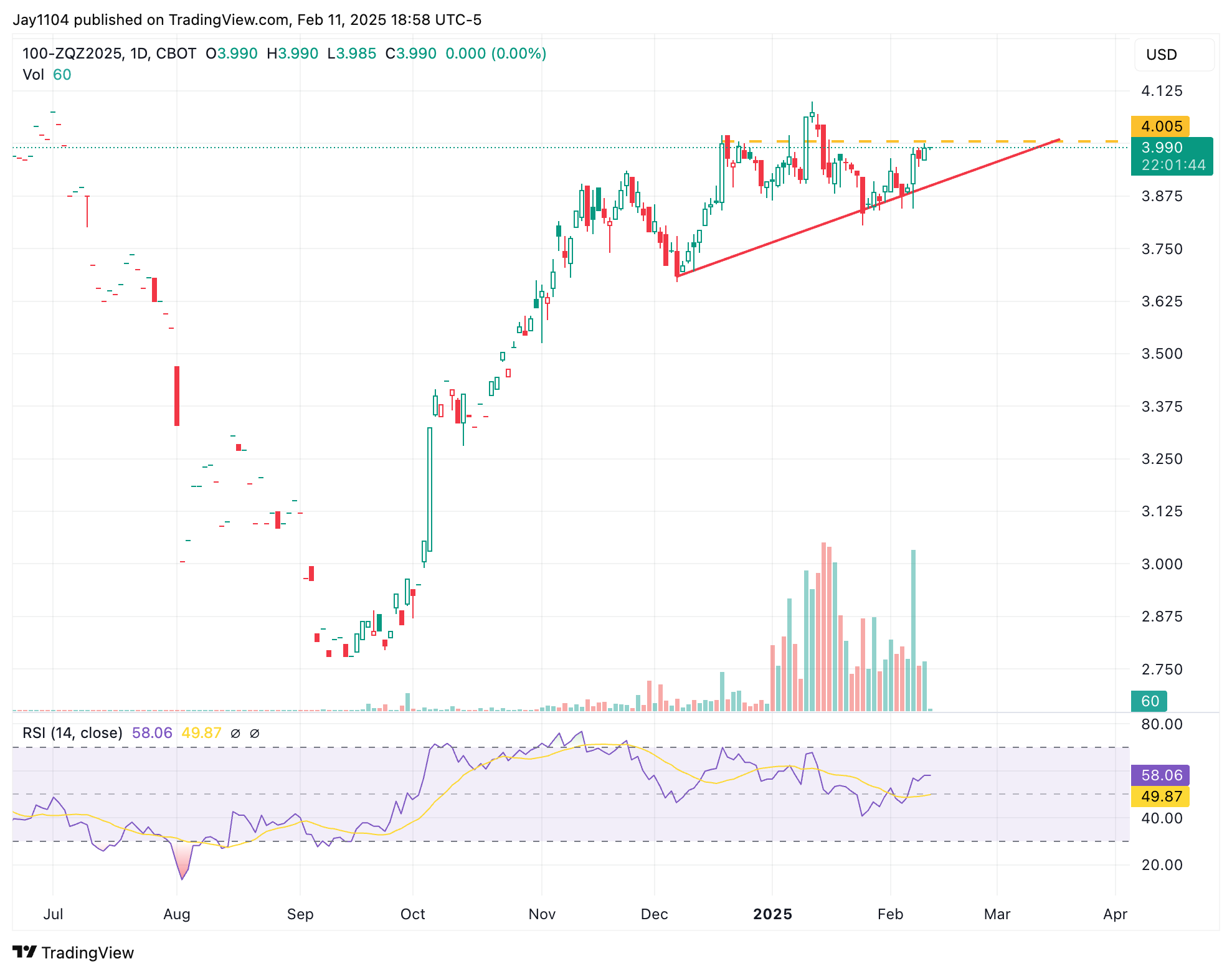
The S&P 500 has been trading sideways in wide ranges since mid-December. We’re at a point where something is likely to change. Volume levels have also declined significantly, and historically, when volume returns, it’s usually because sellers come back.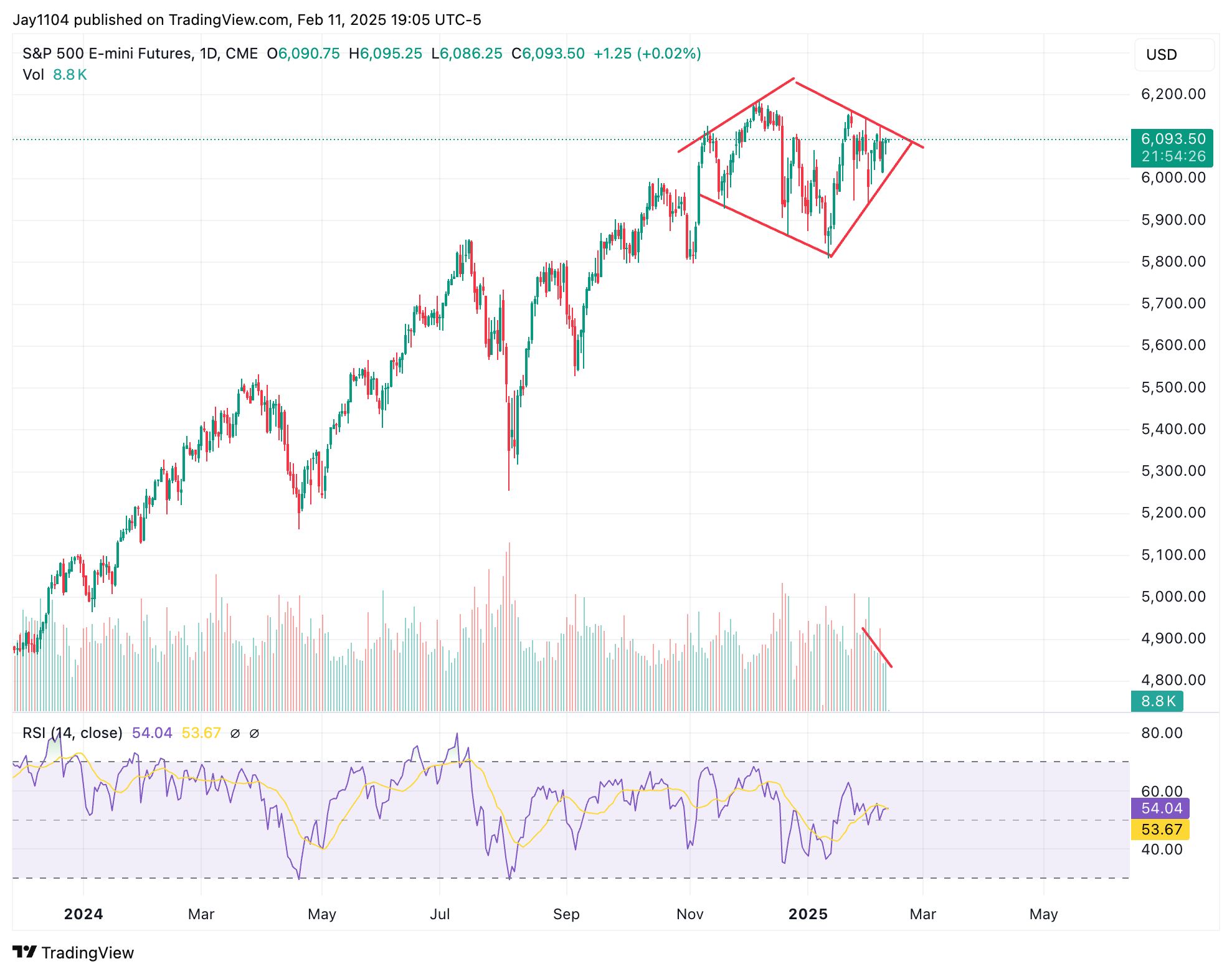
If the CPI report is unfavorable and signals that the Fed is done cutting rates as inflation expectations rise, I believe the S&P 500 would move lower. Given current valuations, further bear steepening would likely be too much for equities to handle. The pattern in the 30-year minus the 3-Month suggest the yield steepens further.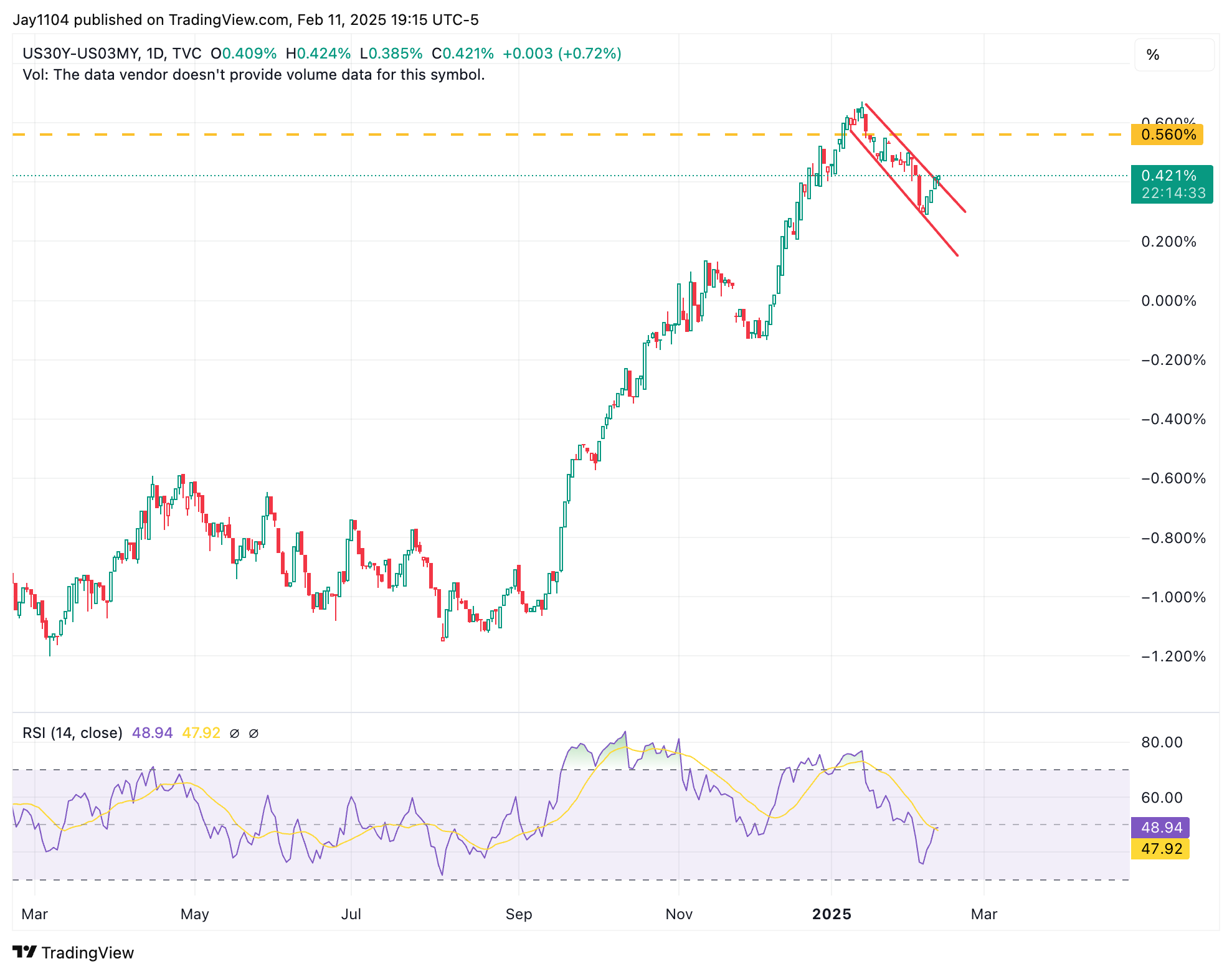
Terms and Definitions By ChatGPT
1. Swaps Market (Inflation Swaps) – A derivatives market where participants exchange fixed payments for floating payments tied to inflation indices. These are used to hedge against or speculate on future inflation.
2. 2-Year CPI Swap – A financial instrument reflecting inflation expectations over the next two years, derived from swap contracts. Rising swap rates indicate increasing inflation concerns.
3. Bear Steepening – A yield curve movement where long-term interest rates rise faster than short-term rates, often signaling inflation concerns or expectations of tighter monetary policy.
4. 30-Year Minus 3-Month Yield Spread – A key measure of the yield curve that compares long-term and short-term interest rates. A steepening spread suggests higher inflation expectations or economic expansion, while an inversion often signals recession risk.
5. Kalshi Pricing – A reference to Kalshi, a prediction market where traders bet on economic data outcomes, such as future CPI prints. Its pricing reflects aggregated market expectations for inflation.
6. Ascending Triangle – A technical analysis pattern characterized by higher lows and a flat resistance level, often indicating a potential breakout to the upside.
7. Fed Fund Futures Pricing – Market expectations for the Federal Reserve’s future interest rate path, expressed through futures contracts. Changes in these prices signal shifts in rate expectations due to economic data or Fed policy signals.
